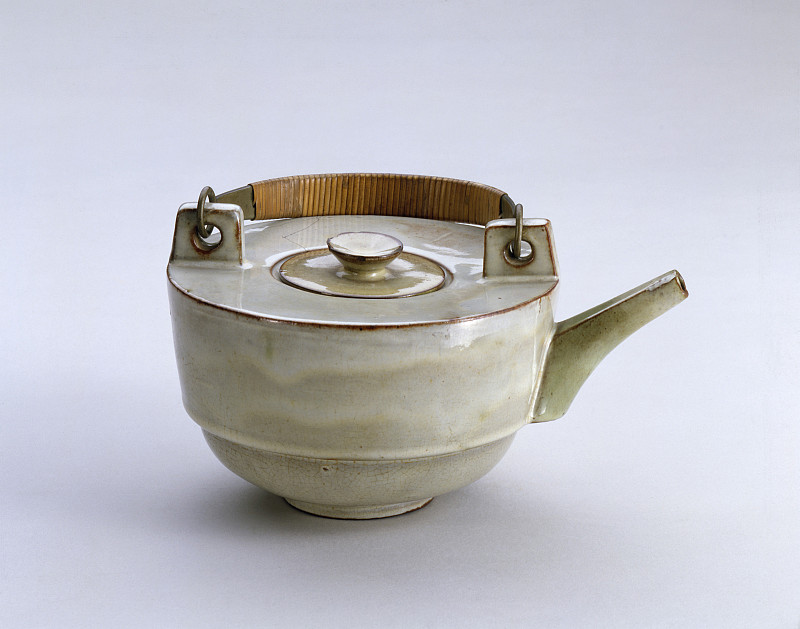
Theodor Bogler, Combination teapot with braided metal handle (L6), 1923 Bauhaus-Archiv Berlin, Photo: Fred Kraus © Vereinigung der Benediktiner zu Maria Laach e.V.

Theodor Bogler, Combination teapot with braided metal handle (L6), 1923 Bauhaus-Archiv Berlin, Photo: Fred Kraus © Vereinigung der Benediktiner zu Maria Laach e.V.
Theodor Bogler, Combination teapot with braided metal handle (L6), 1923
This teapot was one of the Bauhaus’s most imaginatively experimental designs. Theodor Bogler designed the ‘Combination Teapot’ as a modular building-block system. Only six individual elements – body, lid, funnel, handle, handle eyelets, and spout – could be combined into a surprisingly large number of different teapots. The body, for example, could also be used upside down. Bogler’s design was thus a particularly good implementation of Gropius’s demand for ‘unity in diversity’ by ‘restricting oneself to typical basic forms and colours that are comprehensible to everyone’. Bogler’s aim was to achieve ‘factory-like mass moulding’. Although the system did not go into industrial production and the teapot was only manufactured in small series, Bogler’s design is a particularly good reflection of the fresh spirit and urge to innovate at the Bauhaus in its Weimar years.